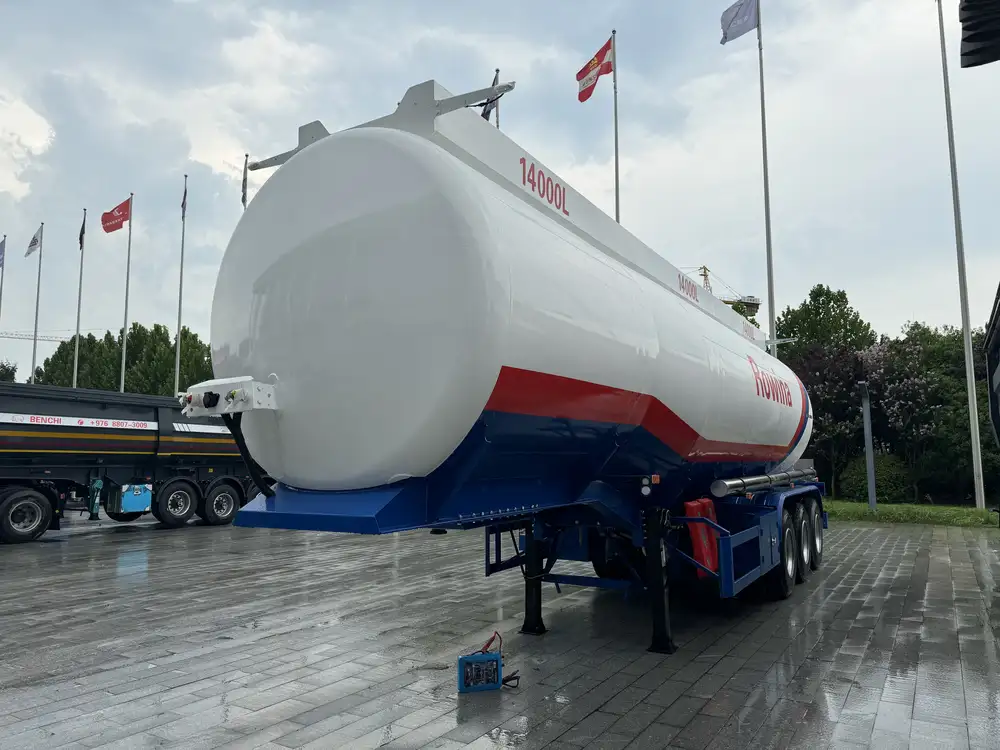When it comes to the world of transportation, the reliability and functionality of semi-trailer brakes are non-negotiable. A malfunctioning brake system not only jeopardizes road safety but also disrupts operations and schedules. As winter approaches, many truck drivers and fleet managers begin to encounter an all-too-common problem: frozen semi-trailer brakes. Understanding why brakes freeze and knowing how to unfreeze them is crucial for maintaining efficiency and safety. In this article, we will thoroughly explore methods to unfreeze semi-trailer brakes, common causes of brake freezing, and preventative measures that can be taken.
Understanding the Problem: Why Do Semi-Trailer Brakes Freeze?
Frozen brakes can occur due to various environmental factors, primarily in cold weather conditions. Moisture accumulation, especially in drum brakes, can freeze in frigid temperatures. In addition, the hydraulic lines may become compromised. Below we will examine the most common causes that contribute to brake freezing:
| Cause | Description |
|---|---|
| Moisture Build-Up | Water may enter the brake system, primarily due to rain or melting snow. When temperatures drop, this moisture can freeze within the brake components. |
| Low Brake Pad Quality | Worn out or substandard brake pads can trap moisture, leading to freezing conditions. |
| Air Pressure Issues | Low air pressure can hinder the functioning of the brakes, making them susceptible to freeze. |
| Poor Maintenance | Infrequent checks and service of the braking system can allow contaminants to accumulate, leading to freezing issues. |
Understanding these root causes will help fleet managers and drivers take proactive steps to mitigate the risk of frozen brakes.
Step-by-Step Guide: How to Unfreeze Semi-Trailer Brakes
If you find yourself facing the unfortunate situation of frozen semi-trailer brakes, follow this step-by-step guide to effectively and safely resolve the issue.

Step 1: Safety Precautions
Before attempting to unfreeze the brakes, safety should be the top priority. Ensure the following precautions are in place:
- Park on a Level Surface: Always park the vehicle on a stable, level surface. This reduces the risk of rolling or slipping while you work.
- Engage the Emergency Brake: Activate the emergency brake to prevent any movement during the process.
- Use Warning Signals: Place warning triangles or flares around the area to alert other drivers.
Step 2: Inspect the Brake Area
Thoroughly inspect the brake components for visible signs of freezing or damage. Look for:
- Cracks or Breaks: Examine the brake pads, shoes, and drums for any deterioration.
- Ice Accumulation: Check for any buildup of ice or frost on the braking surfaces or air lines.
Step 3: Apply Heat
To unfreeze the brakes, applying heat can be an effective first method. Here are the options:
Hot Water Application:
- Method: Take a bucket of hot water and pour it over the frozen components.
- Note: Avoid using boiling water, as it can cause thermal shock to the brake components.
Heat Gun or Torch:
- Method: Utilize a heat gun or propane torch to gently warm the affected areas.
- Caution: Maintain a safe distance to avoid damaging sensitive parts.

Step 4: Use Lubricants
Once the brakes are thawed, applying a suitable lubricant can help prevent future freezing:
- Air Brake Anti-Freeze: Add this product to your air system as a preventive measure against moisture accumulation.
- Silicone Spray: Using silicone lubricant on the brake pads can repel water, providing additional protection.
Step 5: Manual Release
If the brakes remain stuck after thawing, you might need to manually release them:
- Locate the Slack Adjuster: Identify the slack adjuster on your brake assembly.
- Adjust as Necessary: Use a wrench to turn the adjusting bolt, releasing the tension on the brake shoes.
Step 6: Conduct a Trial Run
After the brakes are unfrozen, it is crucial to perform a trial run:
- Slow Roll: Slowly move the trailer forward at a low speed, gently pressing the brakes to ensure they are functioning properly.
- Monitor Performance: Check for any unusual noises or behaviors that may indicate residual freezing or other issues.

Preventative Measures: Avoiding Future Freezing Issues
Taking proactive steps to maintain the integrity of your semi-trailer brakes can save time and enhance safety—all while minimizing the likelihood of freezing:
1. Routine Maintenance Checks
Regular inspections are essential for preventing brake problems:
- Check for Moisture: Inspect brake lines and components for moisture accumulation regularly.
- Brake Pad Quality: Ensure that brake pads and shoes are in good condition and replace any worn or damaged components promptly.
2. Utilize Quality Products
Invest in high-quality components to avoid issues caused by substandard materials:
- Quality Brake Pads: Use advanced brake pad materials that repel moisture effectively.
- Anti-Freeze Products: Choose reputable brands of air brake anti-freeze.

3. Maintain Proper Air Pressure
Ensuring the trailer maintains optimal air pressure is vital:
- Routine Checks: Regularly check the trailer’s air pressure gauges to ensure everything is functioning well.
- Air Dryer Maintenance: Maintain and replace air dryer cartridges regularly to minimize moisture in the system.
4. Winter Preparation
Be proactive before winter hits:
- Winterization: Prepare your semi-trailer for cold weather by winterizing the braking and air systems.
- Storage Tips: If possible, store trailers indoors during extremely cold temperatures.
Conclusion
Understanding how to unfreeze semi-trailer brakes is essential for fleet managers and drivers to ensure safe and efficient transportation operations. By following the detailed steps outlined above and implementing preventive measures, you can mitigate the risks associated with brake freezing. Not only does this knowledge enhance safety on the road, but it also reduces the likelihood of unexpected delays, ultimately optimizing productivity.
By prioritizing regular maintenance, investing in quality components, and being vigilant about environmental factors, you can effectively manage and prevent the occurrence of frozen brakes. This knowledge not only empowers owners and operators but also reinforces the importance of safety in the logistics and transportation industry. When out on the road, well-maintained brakes are a promise of safety, bolstering confidence in every journey undertaken.



